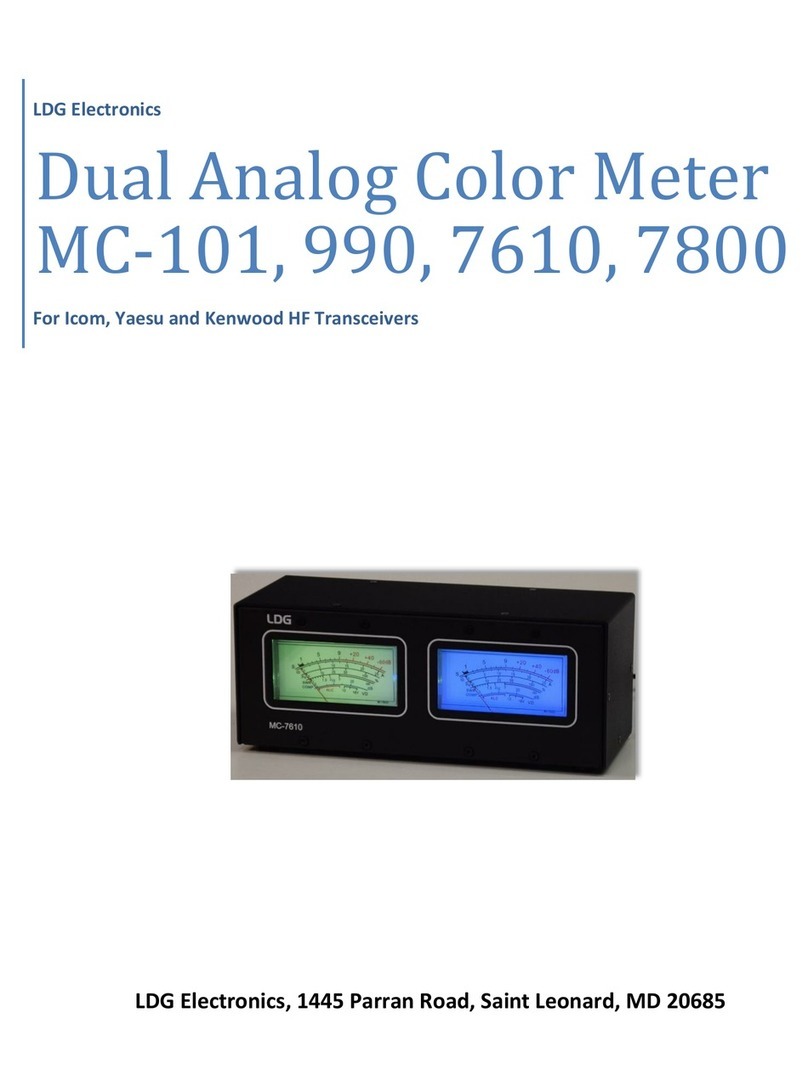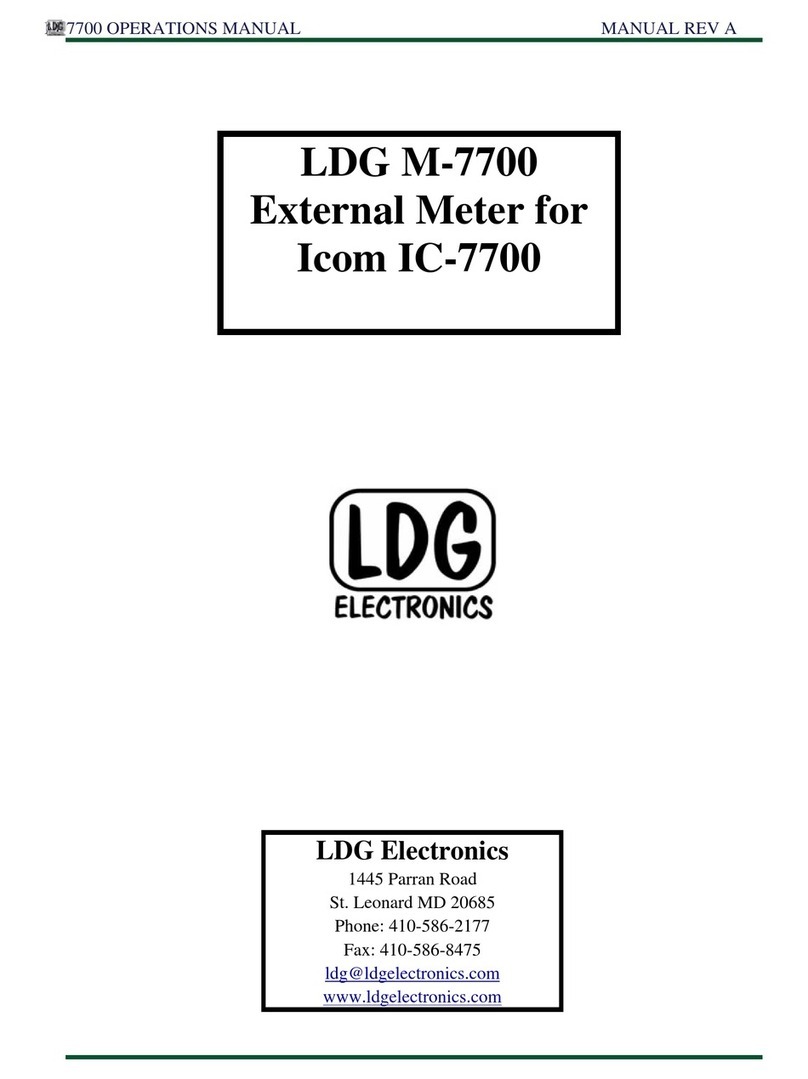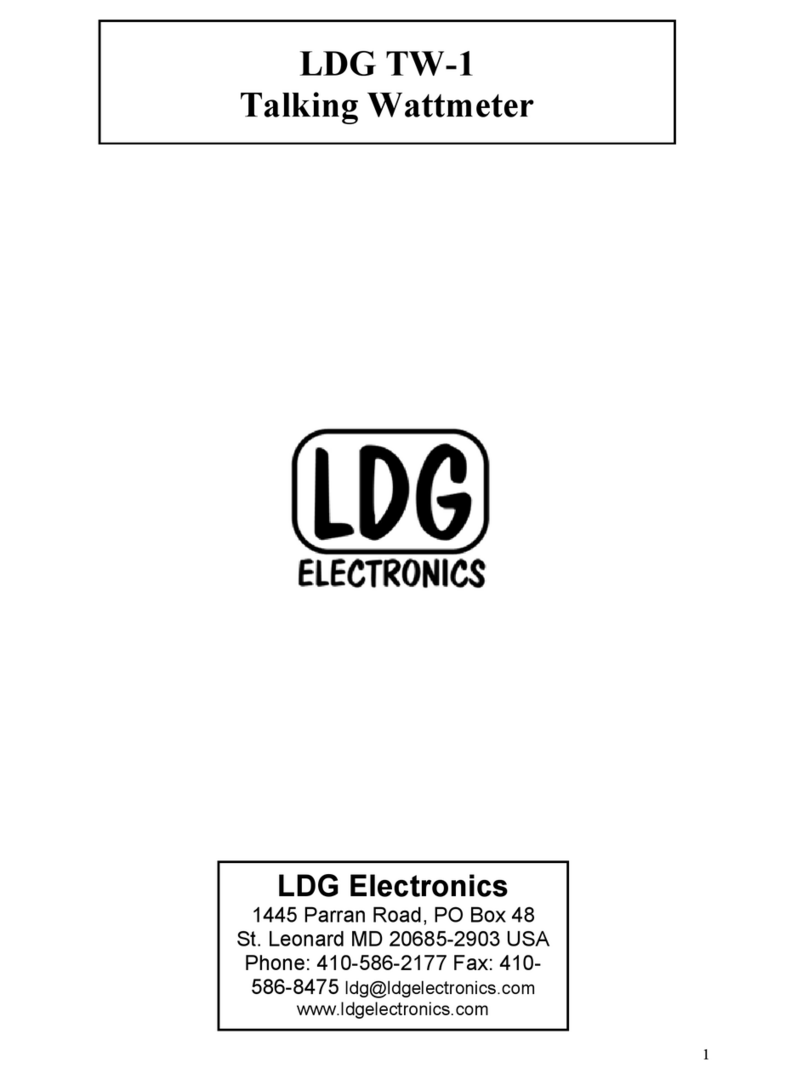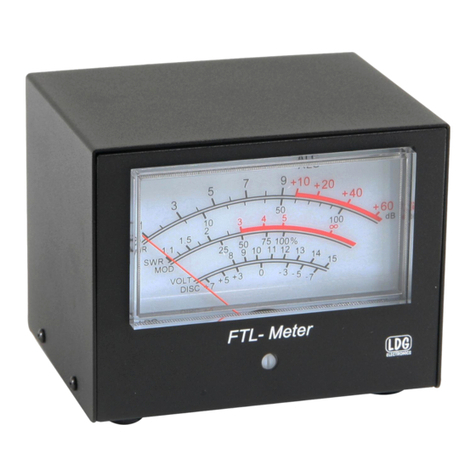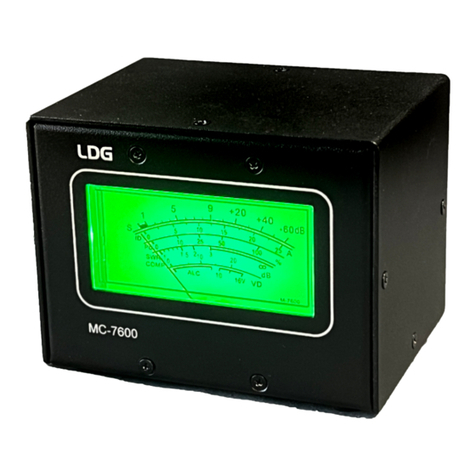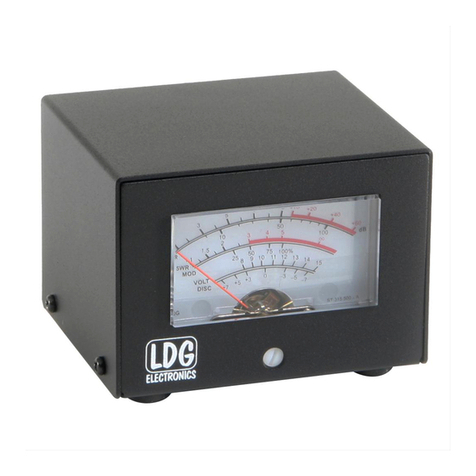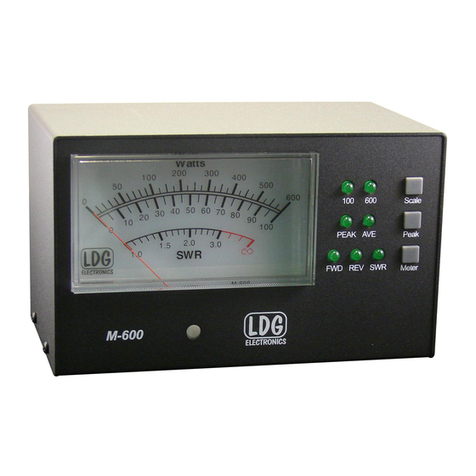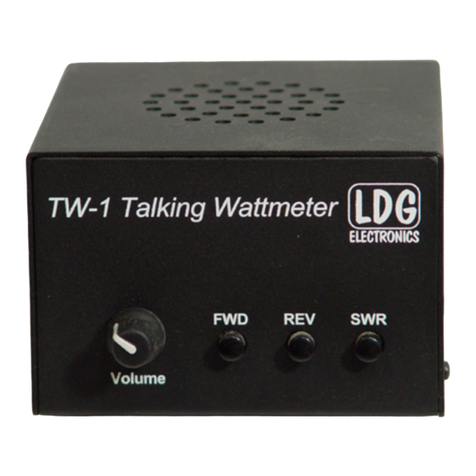PAGE 8
BASIC OPERATION
All operations of the M-1000 are controlled via the front panel buttons.
Meter Mode Selection
Pressing the Meter button repeatedly cycles the M-1000 through three display modes:
Forward power, Reflected power, and SWR. Forward and reflected powers are both displayed on
the upper Watts scale, and SWR is shown on the lower scale.
Peak/Average Reading Selection
The M-1000 meter can display either average power or peak forward power, in watts.
Average mode is suitable for 100% duty cycle modes such as FM, RTTY, or PSK. Peak mode is
more useful on modes with varying duty cycle such as SSB or AM. Peak SWR values are also
displayed, when the meter mode is set to SWR and Peak is selected.
Press the Peak button to toggle between Peak Hold and Average modes. In Peak Hold mode,
the highest value reported will be held on the meter for a moment.
Meter Scale Selection
The M-1000 can display zero to 1000 watts on its forward and reflected power scale, or, for
better detail of lower power readings, a zero to 100 watt scale can be selected. Press the Scale
button to toggle between the 100W and the 1000W scales. To read the scale in the 100 watt
mode, divide the meter reading by 10.
Dual Watch Capability
Because the reading that is selected for display on the M-1000 meter is independent of the
AT-1000ProII’s built-in bargraph display, it is possible to watch more than one parameter at
once. For example, the M-1000 can be set to display peak forward power, while the AT-
1000ProII is displaying average power. Because the AT-1000ProII has two LED bargraphs, it is
possible to watch FWD power and SWR on the AT-1000ProII’s bargraphs, while watching
reflected power on the M-1000, so all three can be viewed simultaneously!
CARE AND MAINTENANCE
The M-1000 tuner is essentially maintenance-free. The outer case may be cleaned as needed
with a soft cloth slightly dampened with household cleaning solution. As with any modern
electronic device, the M-1000 can be damaged by temperature extremes, water, impact, or static
discharge. LDG strongly recommends the use of a good quality, properly installed lightning
arrestor in the antenna lead.













